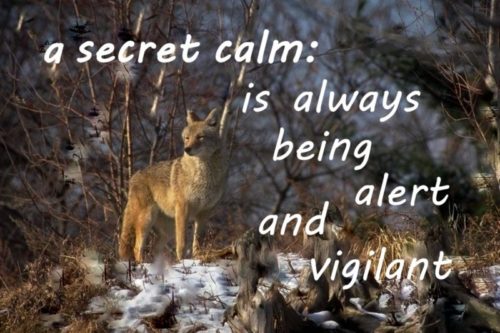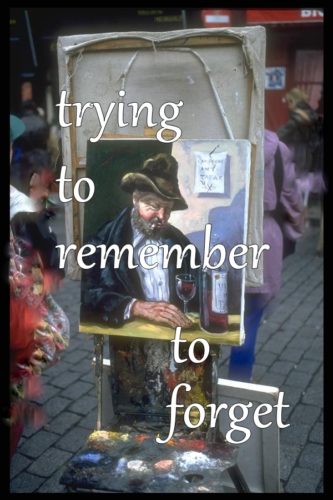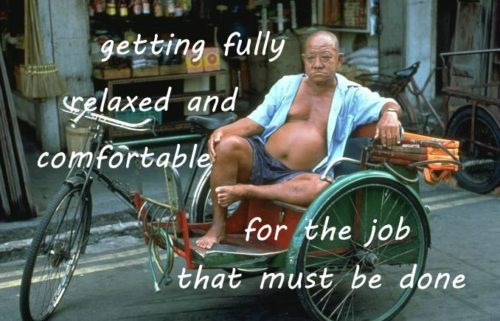 In January 2015 I celebrated my 10th year of writing daily happinesses and thought I’d share some thoughts about the practice.
In January 2015 I celebrated my 10th year of writing daily happinesses and thought I’d share some thoughts about the practice.
First, why I chose the word happiness. An archaic definition of happiness means skilled in magic or divination. In Welsh, back in the 13th and 14th centuries, the word happy was used to mean ‘wise.’ Typically the word wise is used to describe someone who is knowledgeable and experienced, but in Scottish wise also means to direct, guide, advise. That meaning is rooted in the Old Norse wisian, which means to show the way.
The traditional etymological origin of happiness is from happen or chance, which implies that if you’re happy you’ve experienced a sort of random good luck or that you are, perhaps even undeservedly, fortunate.
 But when I first began exploring happiness as a spiritual path, I imagined it more as feeling blessed, of blissful calm. It wasn’t something I could reach out and grab or strive for, but more like divining, where one becomes deeply still and watches and notices. I thought that if I were able to pay attention to those moments of blessing, I might be surprised at how many there were, and my sense of joy and peace would increase. I also hoped I could show others the way.
But when I first began exploring happiness as a spiritual path, I imagined it more as feeling blessed, of blissful calm. It wasn’t something I could reach out and grab or strive for, but more like divining, where one becomes deeply still and watches and notices. I thought that if I were able to pay attention to those moments of blessing, I might be surprised at how many there were, and my sense of joy and peace would increase. I also hoped I could show others the way.
 My decision to spend a year becoming conscious of those ‘happy’ states was inspired in part by my desire to have a daily writing practice. I began describing brief images or feelings that helped me to peek into another, more objective, reality. It wasn’t the same as writing a daily gratitude or daily blessing, since I’d usually make them up. It gave me pleasure to conjure up a vignette, a mood, a story, a person, a place. For example: “Planning for a garden of rare and wild roses.” “Penguins diving into the sea.” “The silence before applause.” “Gazing into the eye of a whale.”
My decision to spend a year becoming conscious of those ‘happy’ states was inspired in part by my desire to have a daily writing practice. I began describing brief images or feelings that helped me to peek into another, more objective, reality. It wasn’t the same as writing a daily gratitude or daily blessing, since I’d usually make them up. It gave me pleasure to conjure up a vignette, a mood, a story, a person, a place. For example: “Planning for a garden of rare and wild roses.” “Penguins diving into the sea.” “The silence before applause.” “Gazing into the eye of a whale.”
 The happinesses I wrote each day morphed into small awarenesses that kept me alert to the subtle qualities of my emotional response to situations or experiences. I found them inspiring. During the day, I’d look at the freshly folded sheets or the sleet at the window with a conscious, interested pleasure. I became amazed and delighted at the small story that surrounded an everyday image when regarded by chance – by happenstance – and duly noted.
The happinesses I wrote each day morphed into small awarenesses that kept me alert to the subtle qualities of my emotional response to situations or experiences. I found them inspiring. During the day, I’d look at the freshly folded sheets or the sleet at the window with a conscious, interested pleasure. I became amazed and delighted at the small story that surrounded an everyday image when regarded by chance – by happenstance – and duly noted.
Noticing feelings is a tremendous practice in any case, I’ve found. Being aware of despondency, trust, or a flurry of excitement, without judgment or self-criticism, can lift you to a marvelous state of calm and self-awareness.
The metaphysical questions about whether happiness is something we create or pursue, or something that occurs randomly, becomes moot.
It’s about noticing.
It’s about imagining.
 One year of writing daily happinesses turned into two, then three years. I began by writing seven every day, and then changed that number to five. In 2007 I began to share them on my website and got a flurry of interest from readers. Then the phenomenon of social media kicked into gear, and I began sharing them more widely. I spent more time meditating on the images each morning, and for a time I came up with three happinesses each day. It felt like a good number, sort of a haiku-esque process that I found deeply satisfying.
One year of writing daily happinesses turned into two, then three years. I began by writing seven every day, and then changed that number to five. In 2007 I began to share them on my website and got a flurry of interest from readers. Then the phenomenon of social media kicked into gear, and I began sharing them more widely. I spent more time meditating on the images each morning, and for a time I came up with three happinesses each day. It felt like a good number, sort of a haiku-esque process that I found deeply satisfying.
This year, every morning I have been drawn to meditate on an image and to allow words to emerge from it. This is what I now share as a daily visual happiness. For those of you who don’t know, you can receive it in your inbox each morning by signing up here. They’re also posted on Facebook, Twitter, Pinterest, and Instagram if you’d like to find them elsewhere.
One more thing that I thought was interesting as I was contemplating the word happiness: the word satisfaction originated from the same Indo-European root that gives us the word sad. In Middle English, sad means sated, tired, satisfied. When we are sated, as we are after a delicious lunch, we are quiet, muted, tired. So satisfaction actually means making sated (facere means making in Latin), which means making sad. This made me think about the more active qualities of joy. Happiness is not a feeling of satisfaction; it’s more like never-ending desire to notice, appreciate, imagine, and enjoy.
